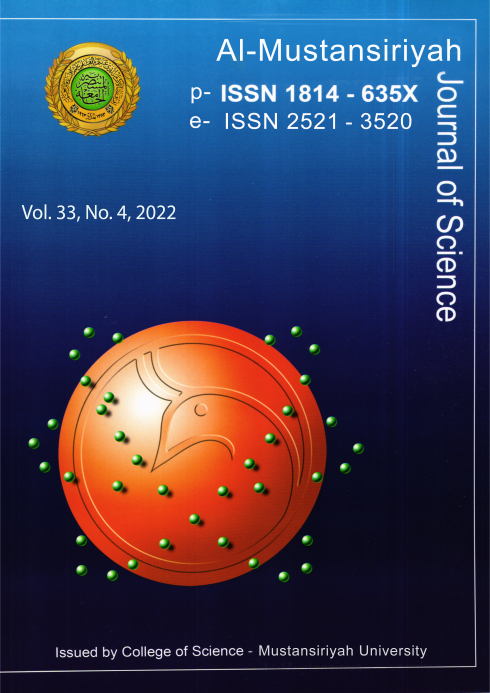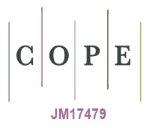Treatment Missing Data of Daily and Monthly Air Temperature in Some Iraqi cities by Using Curve Fitting
DOI:
https://doi.org/10.23851/mjs.v33i4.1202Keywords:
missing data, treatment, temperature, curve fitting method, IraqAbstract
Climate change has become fast and entered a new stage and began to affect all regions of the world. so, the climate must be analyzed and studied accurately. In order to do this, should be available a continuous database without interruptions, to improve the accuracy of forecasts. Therefore, this research aims to treat the missing temperature data for the stations (Baghdad, Hilla, Basra, Nasiriya, and Samawa) by using the curve fitting method. In the monthly treatment for the period (1980-2020), it was observed that the highest match between the real and the treatment values using the Gaussian function and the sine wave function was recorded in the summer months at (100%), and the lowest match was recorded in the winter months. The daily treatment period (2010-2020) recorded the highest match at (97%) in the summer, and the lowest match was recorded in the winter months. In order for the treated values to be close to the real values, it is recommended to use this method for months from April to October. In the winter months, it should be used with caution.
Downloads
References
S. K. Mondal, R. Chakraborty, S. Choudhury, B. Roy, S. Podder, P. Dey, et al., "Weather Forecasting System," AJEC, 2022.
R. B. Alley, K. A. Emanuel, and F. Zhang, "Advances in weather prediction," Science, vol. 363, pp. 342-344,2019.
E. Afrifa‐Yamoah, U. A. Mueller, S. Taylor, and A. Fisher, "Missing data imputation of high‐resolution temporal climate time series data," Meteorological Applications, vol. 27, p. e1873, 2020.
G. Tang, M. P. Clark, and S. M. Papalexiou, "SC-earth: a station-based serially complete earth dataset from 1950 to 2019," Journal of Climate, vol. 34, pp. 6493-6511, 2021.
I. Gad and B. Manjunatha, "Performance evaluation of predictive models for missing data imputation in weather data," in 2017 International Conference on Advances in Computing, Communications and Informatics (ICACCI), 2017, pp. 1327-1334.
N. ustafsson, N., Janjić, T., Schraff, C., Leuenberger, D., Weissmann, M., Reich, H., Fujita, T. (2018)., "Survey of data assimilation methods for convective‐scale numerical weather prediction at operational centres," Quarterly Journal of the Royal Meteorological Society, vol. 144, pp. 1218-1256, 2018.
C. Yozgatligil, S. Aslan, C. Iyigun, and I. Batmaz, "Comparison of missing value imputation methods in time series: the case of Turkish meteorological data," Theoretical and applied climatology, vol. 112, pp. 143-167, 2013.
J. Rahimi, A. Khalili, and J. Bazr Afshan, "Evaluation of different missing data reconstruction methods for daily minimum temperature in elevated stations of Iran: comparison with new proposed approach," Iranian Journal of Soil and Water Research, vol. 48, pp. 231-239, 2017.
S. T. Nassir, A. B. Khamees, and W. T. Mousa, "Estimation the Missing Data of Meteorological Variables In Different Iraqi Cities By using ARIMA Model," Iraqi Journal of Science, pp. 792-801, 2018.
O. M. Katipoğlu, "Prediction of missing temperature data using different machine learning methods," Arabian Journal of Geosciences, vol. 15, pp. 1-11, 2022.
W. H. Hassan and B. K. Nile, "Climate change and predicting future temperature in Iraq using CanESM2 and HadCM3 modeling," Modeling Earth Systems and Environment, vol. 7, pp. 737-748, 2021.
H. T. Majeed, W. G. Nassif, and Y. Q. Tawfeek, "Effects of meteorological parameters on surface concentration of carbon monoxide over Iraq," J. Green Eng, vol. 10, pp. 5927-5940, 2020.
M. Al-Mukhtar and M. Qasim, "Future predictions of precipitation and temperature in Iraq using the statistical downscaling model," Arabian journal of geosciences, vol. 12, pp. 1-16, 2019.
WMO, "Guide to Instruments and Methods of Observation," ed: World Meteorological Organization Geneva, 2018.
A. M. Abdul-Jabbar and A. K. Abdulkareem, "Conversion of rain data from surface stations to forecast models data," Mesopotamia Environmental Journal, vol. 5, 2020.
Downloads
Key Dates
Published
Issue
Section
License
Copyright (c) 2022 Al-Mustansiriyah Journal of Science

This work is licensed under a Creative Commons Attribution-NonCommercial 4.0 International License.
(Starting May 5, 2024) Authors retain copyright and grant the journal right of first publication with the work simultaneously licensed under a Creative Commons Attribution (CC-BY) 4.0 License that allows others to share the work with an acknowledgement of the work’s authorship and initial publication in this journal.






















